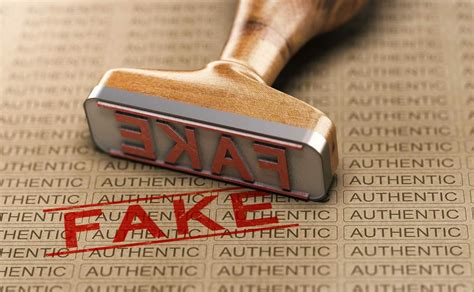Understanding Your Legal Options for Dealing with Fake Products
What Should I Do If I’ve Bought a Fake Product?
Buying counterfeit products can be disappointing and financially costly. Knowing your legal rights and actions can help you address the issue effectively. Here’s a step-by-step guide on what to do if you’ve bought a fake product.

1. Identify the Fake Product
Begin by closely examining the item and its packaging. Counterfeit products often have:
- Substandard materials
- Incorrect or poorly printed logos
- Misspellings or unusual fonts on packaging
If you are unsure, compare it with a genuine product online or in-store. Look for discrepancies in design, materials, and quality.
2. Gather Proof of Purchase
Collect any receipts, invoices, or purchase confirmations. Document details such as:
- Purchase date and location
- Seller’s name and contact details
- Payment method
This information will be essential for filing complaints and claims.
3. Contact the Seller
Reach out to the seller or retailer with your concerns. Politely request a refund or replacement for the counterfeit item. Be prepared to provide your proof of purchase and any details about the product’s authenticity issues.
4. Report to the Platform or Payment Provider
If the seller is unresponsive, consider reporting the issue to the platform (e.g., Amazon, eBay) where you made the purchase. Many online platforms have policies and buyer protection against counterfeit products. Also, if you paid by credit card, contact your provider to discuss possible chargebacks.
5. File a Complaint with Consumer Protection Agencies
Report counterfeit goods to organizations like the Federal Trade Commission (FTC) in the United States, or similar agencies in your country. They can investigate and may help resolve the situation.
6. Contact the Brand Directly
Many brands actively fight counterfeiting and may assist with identifying fake products. Some brands even have authenticity programs where you can submit information about a suspicious product.
7. Consider Legal Action
If the financial loss is significant, you might consider legal action against the seller. Consulting a lawyer experienced in consumer rights or intellectual property can help you determine if this is a viable option. Legal action may be costly and time-consuming, so consider the potential outcomes.
8. Learn About Your Country’s Consumer Protection Laws
Each country has laws regulating consumer rights. Knowing these laws can help you better understand your options for seeking refunds or damages. Research the guidelines on reporting, refunds, and returns for counterfeit products in your jurisdiction.
9. Avoid Similar Purchases in the Future
To avoid purchasing fake items in the future, buy from authorized retailers, carefully check reviews, and be cautious of prices that seem too good to be true.
10. Share Your Experience
Help others by sharing your experience through online reviews or consumer complaint platforms. Your feedback can assist others in identifying and avoiding similar sellers.
Can I Sue a Seller for Selling Me a Fake Product?
Suing a seller for counterfeit goods is an option but requires careful consideration. Here’s what to know about taking legal action.
1. Determine Jurisdiction and Seller Location
First, confirm where the seller is located. International sellers may make legal action more complex. Domestic purchases fall under local or federal laws, while international purchases may involve additional complications.
2. Assess the Financial Impact
Consider the monetary value of the fake product. Lawsuits can be costly, so it’s crucial to weigh the legal expenses against potential compensation.

3. Consult a Consumer Protection Lawyer
Consulting a legal expert can clarify if a lawsuit is feasible. A lawyer can advise on local laws regarding counterfeit sales and your chances of success in court.
4. Collect Evidence of the Fraud
Compile evidence including:
- Product details and photos
- Proof of purchase
- Any communication with the seller
Strong evidence increases the likelihood of a successful legal claim.
5. Small Claims Court as an Option
For cases with limited financial impact, small claims court may be a suitable option. It typically involves a simplified legal process without the need for a lawyer, making it accessible and affordable.
6. Consider Alternative Dispute Resolution
Mediation or arbitration can be less formal alternatives to a lawsuit. These processes may yield a quicker, cost-effective resolution with the seller’s agreement.
7. Check Platform Policies
Many online marketplaces have refund policies for counterfeit products. Contact customer service to explore available protections before considering litigation.
8. Look into Refund Opportunities
If direct action with the seller or platform fails, explore options like chargebacks through your payment provider, which may help you recover your money.
9. Evaluate Your Chances of Success
Success in court depends on proving the product was indeed counterfeit and that the seller knowingly sold it as genuine. An attorney can provide guidance on the viability of your claim.
10. Prevent Future Counterfeit Purchases
Use lessons learned to protect yourself in future transactions. Research, verify sellers, and purchase only from reputable sources to reduce the risk of encountering counterfeit items.
FAQ
What Should I Do If I’ve Bought a Fake Product?
If you’ve purchased a fake product, identify it, gather purchase proof, contact the seller, and report the item to consumer protection agencies.
Can I Sue a Seller for Selling Me a Fake Product?
You can sue, but consider factors like jurisdiction, cost, and the evidence you have before taking legal action.
How Can I Avoid Fake Products in the Future?
Shop only from authorized sellers, verify prices, check reviews, and be cautious of unusually low prices.
What Are My Rights as a Consumer?
Consumer rights vary by location but often include refunds, returns, and dispute resolution options when dealing with counterfeit goods.
Who Can Help with Counterfeit Products?
Consumer protection agencies, the brand itself, and online platforms often provide assistance in cases of counterfeit items.
How Do I Know If a Product is Fake?
Signs of counterfeit products include poor quality, incorrect logos, unusual fonts, and lower prices.
Is It Legal to Buy and Sell Fake Products?
Selling fake products is illegal in most countries. Buying them unknowingly usually has no legal consequence, but it’s essential to report counterfeits.
| Action | Description |
|---|---|
| Identify the Product | Compare with genuine items to confirm authenticity. |
| Contact Seller | Request refund or replacement from the seller. |
| Report Counterfeit | File a report with consumer protection or online platform. |
| Consider Legal Action | Seek legal advice for possible litigation options. |
| Prevent Future Issues | Buy from trusted retailers, check reviews, and inspect products. |


